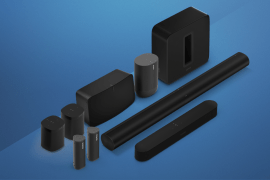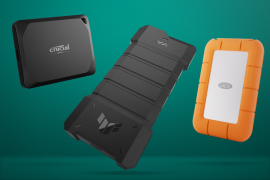Best upcoming phones for 2025: find your next phone!
Flagships, foldables, midrangers and affordable models - there's an upcoming phone for all budgets
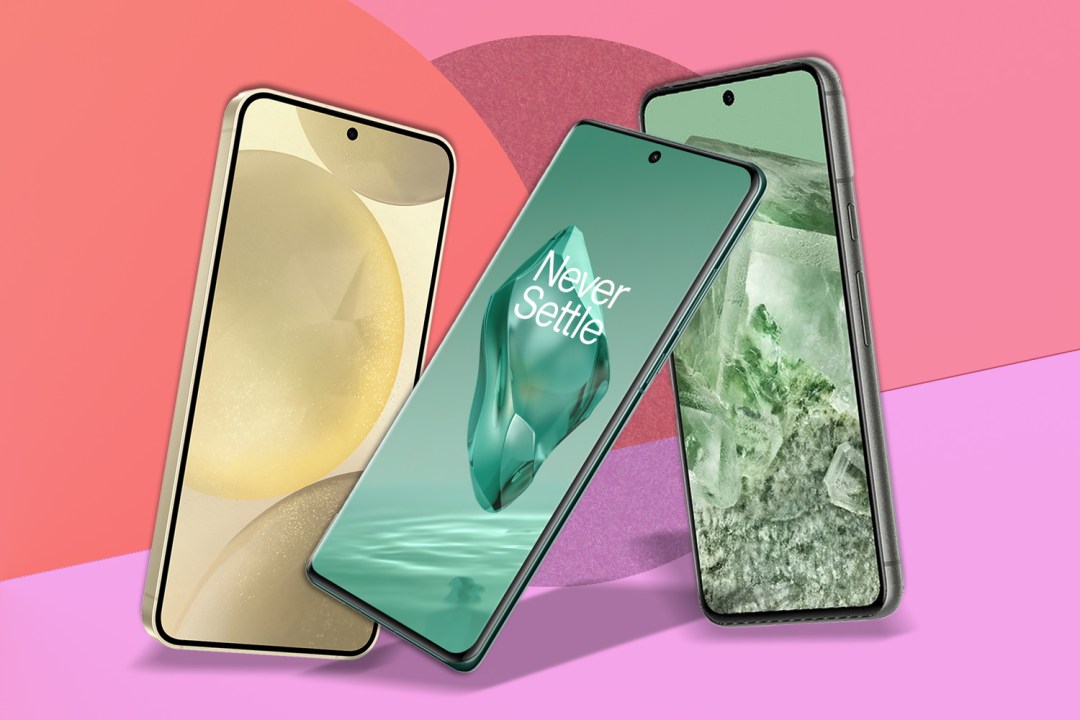
There’s never a shortage of new upcoming phones to get excited about: from flagships to foldables and clamshells to cameraphones, something shiny is out there looking to tempt you away from the handset that’s called your trouser pocket home for the last year or two.
We’ve listed all the major upcoming phones due to land over the next twelve months below. That includes confirmed releases, ones that have debuted in China ahead of a Western release, and rumoured reveals, so you can start working on your shortlist – and saving your pennies. Read on for what to expect in terms of specs, camera capabilities and software smarts – and for some added context, check out the summary of every major smartphone announcement from recent months, with links to our review of the biggest hitters.
Only care about phones you can buy right now? Read our guide to the best smartphones on sale today.
All the best upcoming phones we’re expecting soon
Nothing Phone 3a series

Nothing’s first 2025 release will actually be a two-for-one deal; the firm has been teasing the “Phone 3a Series” for a few weeks ahead of its expected Mobile World Congress reveal, with preview images showing two very different evolutions of the transparent styling seen on last year’s Phone 2a and Phone 2a Plus.
Both phones will reportedly get three camera lenses, including a periscope telephoto lens for the first time. A preview video showed images and videos that get impressively close to an iPhone 16 Pro Max for visual fidelity, which is a coup. fora device that’ll likely be ales than half the price. Snapdragon power is also confirmed – something that’ll surely please all the Qualcomm apologists who lost their minds over Phone 2a using Dimensity silicon.
A full reveal is mere weeks away at this point, but that doesn’t stop the current Phone 2a from being a true smartphone bargin:
Xiaomi 15 Ultra

The vanilla Xiaomi 15 was one of the first commercially available phones with Snapdragon 8 Elite internals, but has stayed China-only since its October 2024 debut. Plenty of rivals have shown up in the interim, including a new, smaller Pro Pixel 9. A sizeable 5400mAh battery and some Leica-assisted cameras should still make it worth a look once it reaches Europe and beyond, most likely in March.
That said, it’ll feel like a footnote compared to Xiaomi’s other expected Mobile World Congress reveal: the Xiaomi 15 Ultra. The sequel to one of last year’s best cameraphones is rumoured to push the hardware envelope even further for 2025, with a 1in lead snapper two high pixel count zoom lenses. Elsewhere specs are likely to be equally top-tier, with a big battery, Snapdragon 8 Elite power, and the latest version of Xiaomi’s HyperOS software.
Until then, the Xiaomi 14 remains one of the most potent ‘small’ Android phones around, and can be found at tempting prices:
Google Pixel 9a
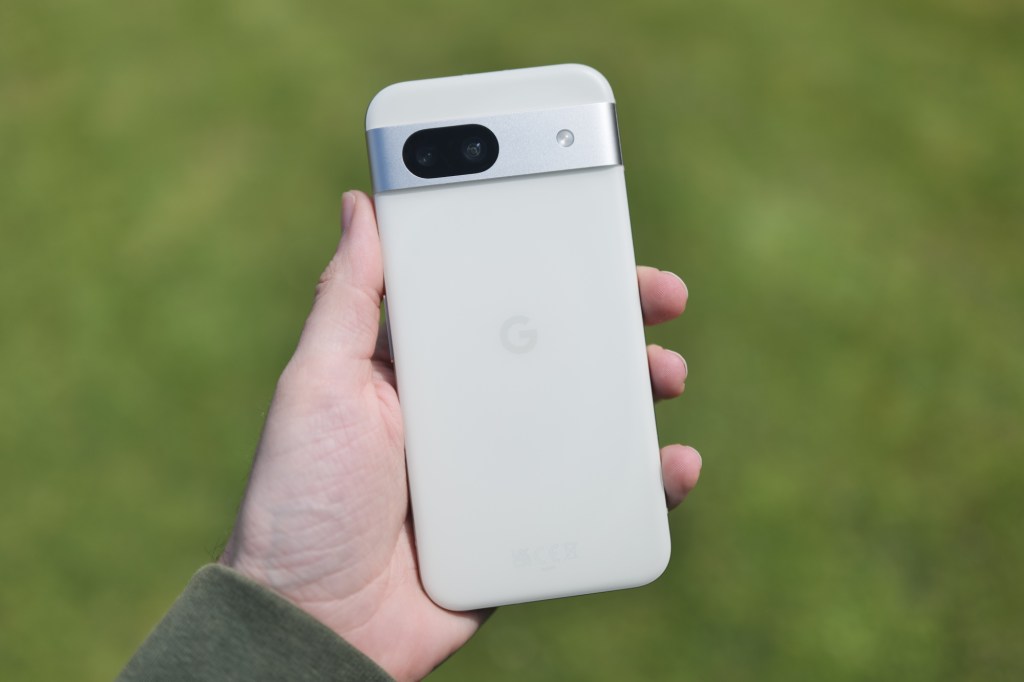
Google has only recently overhauled its mainline Pixel range with a smaller Pro, and brought the Fold on side as well. Rumour suggest that could be it for the Pixel 9 generation, with a cheaper 9a off the cards – but other leakers have indicated that’s not the case. If we do get a Pixel 9a, expect it to hover around the $500/£500 mark and dilute down the Pixel 9’s Gemini AI smarts, clever rear cameras and fresh new design into something a little more wallet friendly.
Pixel fans could be in for a long wait until the 9a arrives – if it does at all. So in the meantime, the Pixel 8a is still a superb buy:
Nothing Phone 3
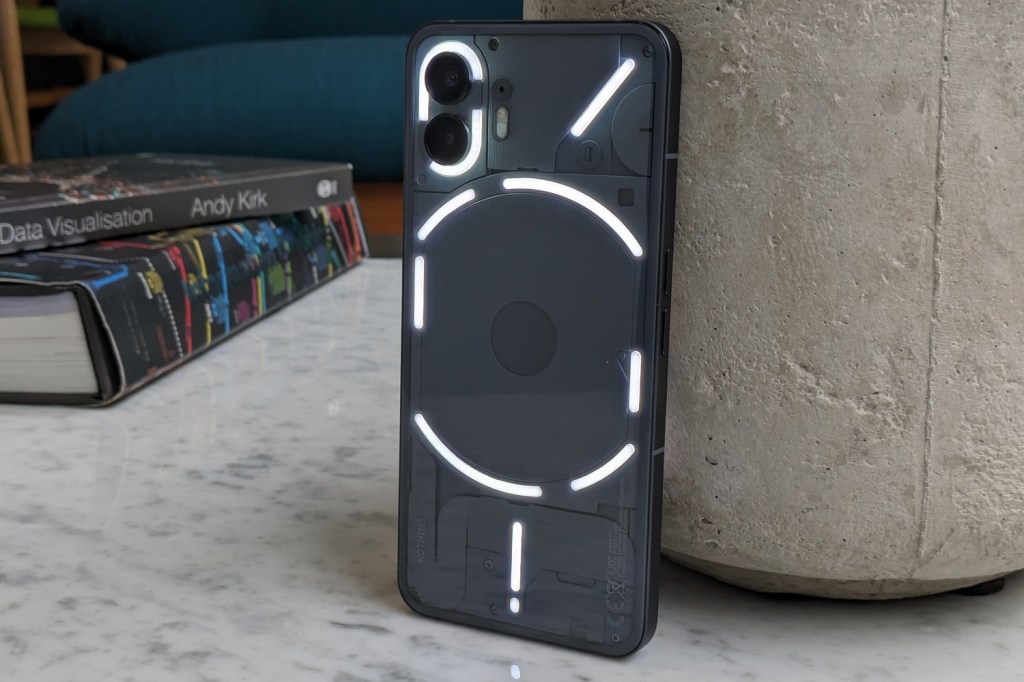
One of the upcoming phones I’m genuinely most excited about, Nothing’s long-awaited flagship looks set to debut later this year. The design-led firm is known for its unique glyph lighting, fondness for transparency, and minimal widget-based Android skin, but until now its handsets have been focused on the affordable end of the spectrum.
A first true flagship will almost certainly get a top-end Snapdragon chipset, big battery, sizeable OLED screen and three rear cameras. An internal company email sent from founder Carl Pei also hints at “breakthrough innovations in user interface” and a focus on AI features, to help complete with the likes of Samsung and Google at the high end. A new version of Nothing OS (complete with extra widgets) seems like a given, as does a new take on the glyph LEDs.
Until it appears, the Nothing Phone 2 remains the firm’s top offering – and can be had for mid-range money:
Samsung Galaxy S25 Edge

Teased at the end of January’s Galaxy S25 reveal event – and only for those in attendance in the USA – the Galaxy S25 Edge is something of a mystery right now. Samsung has acknowledged it’s working on a thinner version of its flagship phone, but has yet to commit to a launch date or talk about hardware specifics.
The rumours aren’t painting a beautiful picture right now, with talk of shrunken battery capacity and less capable cameras in order to shave what amounts to barely a millimetre off the existing S25. But with Apple apparently working on an iPhone 17 Air, thinness might just be the next smartphone battleground.
It’s not like the flagship S25 Ultra is especially porky – and it can be had right now, rather than months down the line:
Latest smartphone releases
After three generations of SE, Apple has taken its most affordable phone more upmarket – and made it a little less affordable in the process. The 16e gets impressively close to the regular iPhone 16, with a 6.1in OLED screen, A18 chip and 48MP rear camera. It sticks with a notch instead of dynamic island, and doesn’t support Magsafe accessories, but you’re otherwise getting the full iOS experience, including Apple Intelligence.
With OnePlus bowing out of a second-gen foldable phone – at least for now – that leaves Oppo to fly the flag solo. That’s particularly frustrating for US shoppers, seeing as the Find N5 is an absolute stunner. The world’s thinnest book-style foldable also has a huge battery, flagship CPU, and three very capable cameras. Until availability improves, you’ll need to import one – but the astonishingly slim dimensions and superb software that takes advantage of the cavernous inner display might make it worth the hassle.
Samsung’s latest non-folding flagship isn’t a ground-up reworking of its predecessor, but does add a few nice-to-haves like a speedy Snapdragon 8 Elite for Galaxy chipset, new 50MP ultrawide snapper with macro shooting smarts, and a flatter, curvier design more in keeping with the rest of the S25 range. The firm has focused more on software this year, integrating Galaxy AI across Android and borrowing some Gemini skills from Google. S23 Ultra and S24 Ultra owners really won’t need to think about upgrading, but for anyone with an older handset this has everything but the kitchen sink.
You’ll really have to look hard to spot the differences between this year’s mainstream Galaxy models and last year’s. A few mild design tweaks and some new colours are basically all you get on the outside, while underneath there’s a new Snapdragon 8 Elite for Galaxy chipset and more RAM for the S25. The smaller of the two remains the de facto choice for a compact flagship, though, with great cameras, a gorgeous screen and sensible asking price.
Slick styling, a top tier screen and wicked performance should be a given for any Honor flagship. The Magic 7 Pro also goes big on photography, of course – but its the Ai-infused super zoom abilities that set it apart from rivals. It’s one of few Android phones with secure facial recognition, and the MagicOS skin has some very clever multitasking tools. It’s a left field choice, perhaps, but one that’ll impress you just about everywhere.
An impressive refinement on what was already a capable ‘flagship killer’, even if the price continues to climb that little bit closer to premium territory. The OnePlus 13 has top-tier performance, a huge battery, modern styling and an impressive set of rear cameras. There are really no flaws to speak of, making it a true alternative to the likes of Samsung and Google.
The first Snapdragon 8 Elite smartphone to make its way to Western audiences, the ROG Phone 9 Pro doesn’t skimp on performance one iota. Revised cooling and oodles of RAM give it the edge in games, while the built-in air triggers keep the OLED screen free of onscreen controls. The somewhat subtle styling of the outgoing phone returns (just with fancier AniMe Vision LEDs on the rear) and it remains one of the best gaming phones for photography.
The Find X8 Pro is a triumphant return to Western markets for Oppo. The photography-first flagship delivers fantastic stills and video, courtesy of four 50MP rear snappers – two of which are telephotos – and Hasselblad colour science. MediaTek Dimensity 9400 power gives it a real edge in games, and battery life is superb too. It’s priced keenly to compete with the best Samsung and Google to have to offer, so if you’re not a brand snob it’s a fantastic way to get some high-end hardware in your pocket.
Apple iPhone 16 and iPhone 16 Plus
A revised rear camera bump, Action button and new Camera Control touch surface mark the iPhone 16 out as one of the bigger upgrades to Apple’s mainstream model in recent years. New, more vibrant colours are on offer, and performance has taken another step up. Apple Intelligence is now on board, too, after being MIA at launch.
Apple iPhone 16 Pro and Pro Max
This year’s flagship iPhones go even bigger, with 6.3in and 6.9in screens. They get the same Camera Control button as the vanilla iPhone 16, alongside the returning Action Button, and are still made from titanium. There are some decent camera upgrades, with both models now getting the 5x periscope zoom.
Honor’s latest book-style foldable is as thin as it gets, measuring a barely-there 4.4m when unfolded. No other rival comes close, at least here in the West where folding options are still thin on the ground. It’s a flagship through-and-through, with Snapdragon 8 Gen 3 CPU, a set of high quality cameras, and a beefy enough battery to comfortably last all day.
Google’s mainstream flagship has been updated with fresh duds, including a new take on the distinctive camera bar. It sticks with two rear cameras and a 6.3in screen, but makes the leap to Tensor G4 power and 12GB of RAM, which should help it stay speedy for the sorts of Gemini AI-accelerated tasks the firm reckons will be all the rage this year. It’s a harder sell now Google also has a compact Pro variant, though…
Google Pixel 9 Pro / Pixel 9 Pro XL
For the first time, Google is offering its non-folding flagship in two screen sizes. The Pixel 9 Pro has a 6.3in screen, matching the vanilla Pixel 9, while the Pixel 9 Pro XL gets a 6.8in panel. Both have a majorly revised design – which is admittedly Apple-esque from the sides – but stand out with chunky camera bars containing a trio of sensors. They’re packing Tensor G4 chipsets, 16GB of RAM and enough battery for ‘all day use’, along with Gemini AI smarts.
A huge year-on-year upgrade for Google’s folding flagship, the Pixel 9 Pro Fold is a lot more than a simple name change. It shares its styling with the rest of the Pixel 9 generation, with a 6.3in outer screen and 8in inner panel (that finally folds completely flat). Three rear cameras, Tensor G4 silicon and ‘all day’ battery life make the cut, as do some fold-specific software additions. It’s pricey, but gives the Galaxy Z Fold6 some serious competition in territories where Chinese foldables aren’t readily available.
Finally closes the gap between Samsung’s foldable phones and the more mainstream Galaxy S series, with a potent Snapdragon 8 Gen 3 for Galaxy chipset, larger 4000mAh battery, and 50MP main camera sensor. The styling has been streamlined and the software upgraded, so while the cover screen hasn’t grown at all (and you still can’t run any app you like on it without some power tool workaround) it’s more usable than ever.
The world’s most popular book-style foldable has slimmed down a teeny tiny bit for its sixth generation. Shorter but wider dimensions add 1mm to the outer screen and 2mm to the inner one. The frame has been flattened and given a matte finish to better mimic the Galaxy S24 Ultra. Inside there’s a Snapdragon 8 Gen 3 for Galaxy chipset and extra large vapor chamber to keep it cool. A similar trio of cameras and same battery capacity as last year mean this foldable is all about the software, with lots of Galaxy AI additions.
Nothing’s bargain-focused sub-brand has diluted down the already affordable Nothing Phone 2(a) to the bare essentials, while keeping the same fantastic software and the sort of performance you just don’t expect for the cash. A 50MP main camera takes impressively good photos, and the modular accessories make it truly unique. No NFC is a bit of a downer, but otherwise there’s little that can match it for £200.
An even larger cover screen, bigger battery, and majorly upgraded camera hardware help cement the Razr 50 Ultra near the top of the flip-style foldable pile. Being able to use any app you like on the outer display transforms the way you use the phone, and translates to impressive longevity. Performance is right on the money, it looks the business in a range of vibrant colours, and takes a fantastic photo for a clamshell. Undercutting the Samsung Galaxy Z Flip 5 makes it a fantastic flip phone option.
Photo specialist Studio Harcourt was tapped up for Honor’s new AI-enhanced portrait mode, giving the 200 Pro a leg up over the rest of the mid-range field. You’re getting a lot of hardware for your cash here, with three rear snappers, a giant 5200mAh battery, a bright AMOLED screen and Snapdragon 8s Gen 3 power. It’s not as mainstream as a Pixel 8 or Galaxy S24 – but one-ups them both in a few key areas.
After multiple generations of Sony doing its own thing with OTT screen resolutions and super-skinny aspect ratios, the Xperia 1 VI is a more mainstream flagship offering. It has a 19.5:9 screen with a Full HD+ pixel count, but benefits from higher brightness and LTPO adaptive refresh rate tech for some of the best battery life you’ll get from a Snapdragon 8 Gen 3 phone. Sony hallmarks like expandable storage, a 3.5mm headphone port and front-firing stereo speakers remain, of course. The three-lens rear camera setup now zooms further and does a great job in auto mode, so amateur smartphone snappers are much better catered for.
Essentially a Pixel 8 for considerably less cash, with just a few cutbacks, the Pixel 8a is Google proving once again it can create a phenomenal affordable phone. It’s packing lots of Google’s new AI additions, a Tensor G3 processor, an IP67 rating, 120Hz display… the 64MP main camera and 13MP ultrawide are wonderfully capable, too. If £500 is your maximum budget for a smartphone, you’d be hard-pressed to go wrong with one of these.
Asus broke from tradition with this latest Zenfone. Instead of being pocket-friendly, the 11 Ultra went big with a 6.78in display. It’s flagship-grade everywhere you’d expect, including chipset (a Snapdragon 8 Gen 3), big battery, OLED screen and triple rear camera setup with stabilised main snapper. However, there’s a lot more competition among larger phones than there is at the smaller end of the smartphone spectrum, making it tough to recommend in light of more capable rivals.
It’s a big departure from Nothing’s last two phones, and makes a major change on the inside too – but the Nothing Phone 2a is still a compelling alternative to affordable models from big-name rivals. It simplifies the firm’s Glyph lighting, debuts a redesigned rear and uses MediaTek silicon to provide the power. It’s got a big battery and two capable cameras (for the cash), making it a winner in the sub-£350 class.
The more mainstream of Xiaomi’s two 14 series models has a compact 6.36in screen, but that doesn’t mean it had to skimp on hardware. A sizeable battery capacity, Snapdragon 8 Gen 3 chipset, and a trio of very capable Leica-tweaked rear cameras make it a true rival to the likes of Samsung’s Galaxy S24.
Arguably the biggest story out of this year’s MWC show, the Xiaomi 14 Ultra promises the best camera hardware you’ll find on any phone – plus a dedicated upgrade kit that adds physical controls into the mix. A 1in sensor main camera with variable aperture, twin telephotos with OIS and an ultrawide with an equally high pixel count make it a force to be reckoned with – and it’s undeniably a flagship phone everywhere else, with slick styling, plenty of power and a beefy battery.
The Galaxy A series are easily Samsung’s most popular phones in terms of worldwide sales, and the firm has gone all out with this latest generation to please the masses. It borrows a metal and glass build from the pricier Galaxy S24, and a matching main camera at the rear with a 50MP sensor. It doesn’t skimp on power or battery life, either. As an affordable entry to the range, it looks like the real deal.
Samsung Galaxy S24 and Galaxy S24 Plus
This year’s two mainstream Galaxy flagships see minor styling tweaks compared to their predecessors, and reuse the same camera hardware. Bigger batteries, brighter displays with skinnier bezels, and an unwavering focus on on-device AI help them stand out, with the larger of the two also getting a higher screen resolution and faster wired charging.
The new hero of the Galaxy line-up has a titanium frame and Corning Gorilla Armor glass, making it super tough as well as super luxurious. That screen is flat now, rather than curved, and there’s a Snapdragon 8 Gen 3 lurking underneath for serious power. AI is a big deal this year, being baked in to multiple apps and especially useful for generative photo edits.

